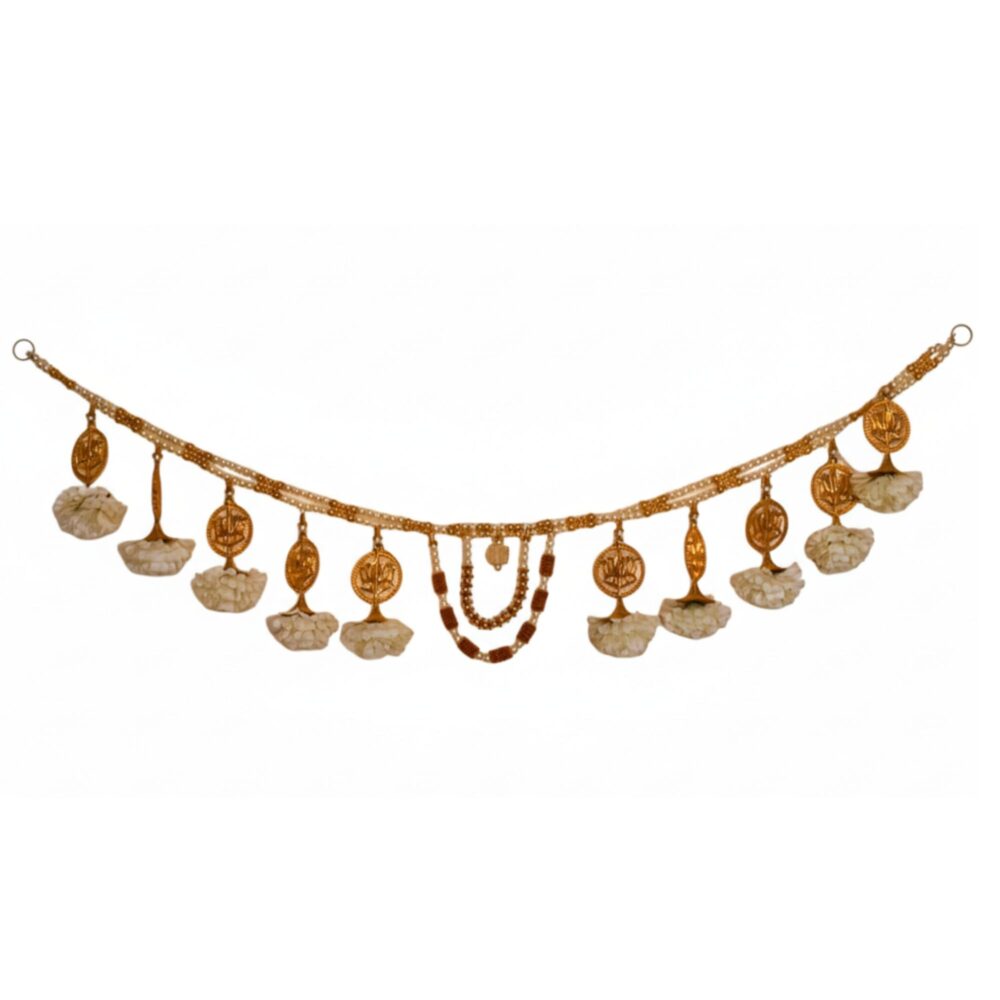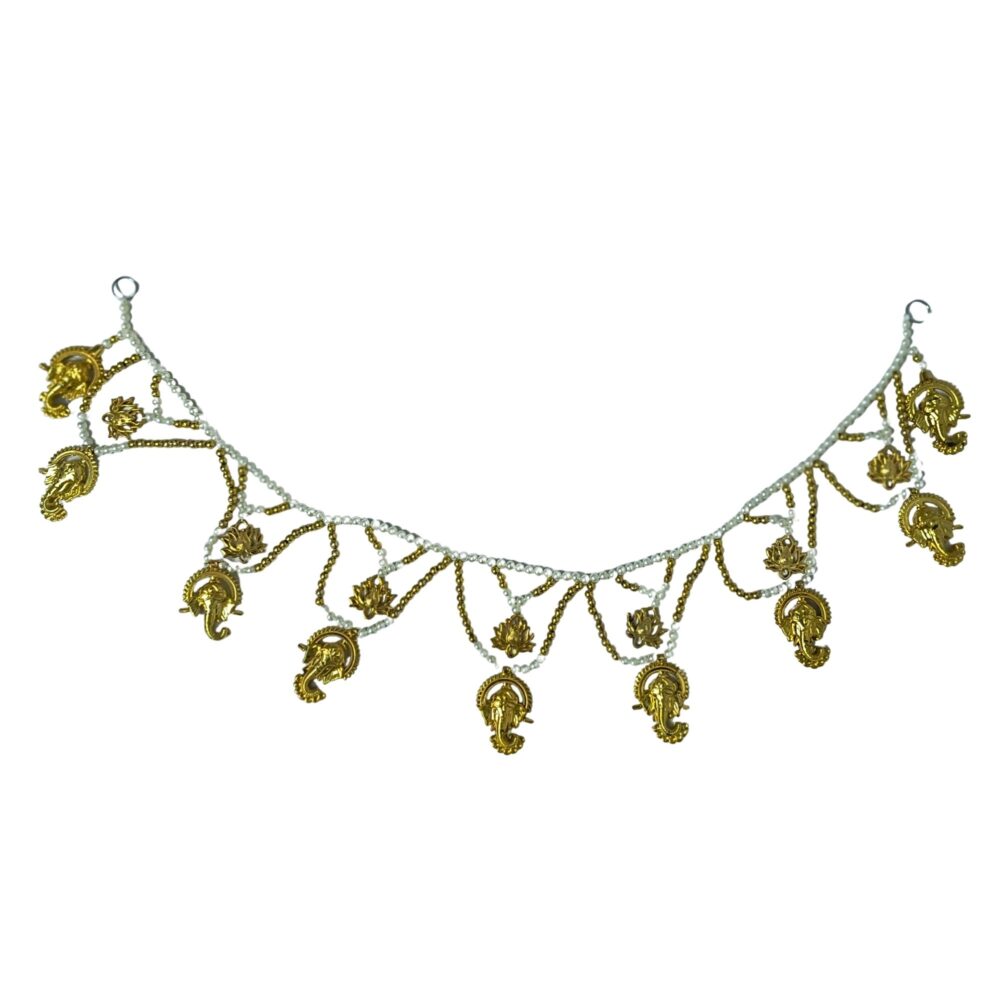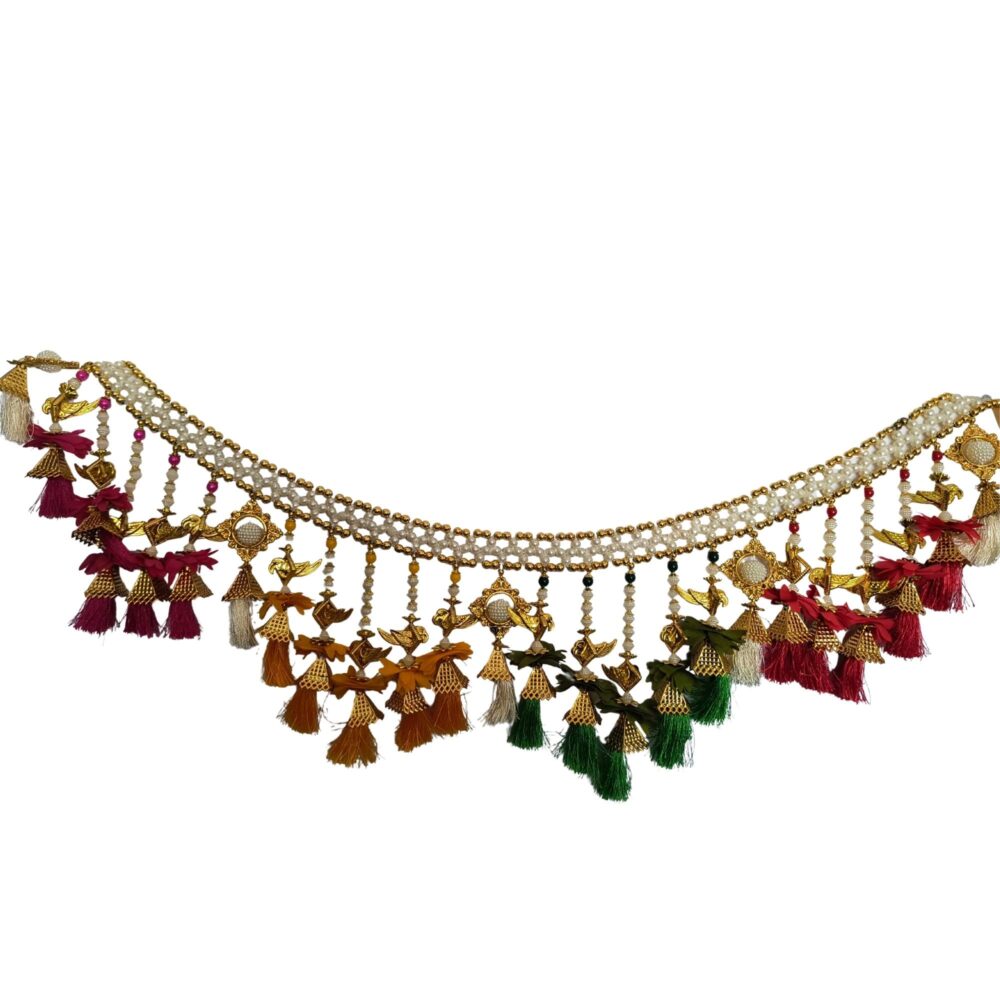The toran bridges the worlds of art, architecture, and spirituality. Whether carved in stone or strung with flowers, it remains a timeless emblem of India’s sacred threshold culture — where the ordinary meets the divine.
What is a Toran / Torana?
Put simply: a toran (or torana) is an ornamental hanging placed above a doorway. Think of it as a welcome emblem that bridges architecture, faith, and beauty.
Etymology & Sanskrit Roots
Derived from the Sanskrit word toraṇa, it means “gateway” or “arch.” Over centuries, it became a vital feature in Hindu temple architecture, Vastu Shastra, and folk traditions. Texts like the Shilpa Shastra also refer to decorative thresholds used in sacred structures.
Two Faces: Monumental vs. Domestic Torans
On one hand, majestic stone toranas like those at Sanchi Stupa narrate Buddhist and Jain stories. On the other hand, a string of fresh mango leaves and marigolds flutters above a modest doorway — both expressing the same ritual essence of threshold sanctity and auspiciousness.
Earliest Appearances in Ancient Material & Texts
Scholars trace the idea of decorated gateways to the Vedic period. Texts like the Rigveda and Atharvaveda refer to doorway rituals and protective thresholds (grama-dvara). These laid the foundation for later Hindu architectural traditions described in Vastu Shastra.
Post-Vedic Mentions
Although direct citations of “toran” in Garuda Purana or Vishnu Purana are limited, the spirit of the custom — decorating entrances to invite blessings — is found throughout Puranic literature and Hindu ritual texts.
Toran in Puran and Itihas (History)
While the Puranas may not narrate a single “origin story,” they consistently emphasize ritual purity, auspicious thresholds, and offerings to deities like Lakshmi. During Diwali or Navratri, torans are hung to symbolize the home’s readiness to receive divine energy — a practice rooted in these Puranic and Vaastu ideas.
Torana in Indian Architecture
When we step into the world of sacred architecture, the torana becomes monumental.
The Sanchi Toranas: A Case Study
The four elaborately carved toranas of the Great Stupa at Sanchi (Madhya Pradesh) are classic examples of Buddhist sacred architecture. These UNESCO World Heritage gateways narrate Jataka tales and reflect the artistic genius of the Mauryan period.
Spread Across Traditions
From Amaravati Stupa to Ajanta and Ellora, the torana motif transcends religion, appearing in Hindu, Buddhist, and Jain temples — a universal symbol of honor, enlightenment, and spiritual entry.
Domestic Torans — Material & Culture
The bandanwar or bandarwal represents the household form of the toran — often made with cloth, beads, mirrors, bells, or mango leaves.
Regional Variations
In Gujarat and Rajasthan, embroidered torans showcase intricate mirror-work and bead patterns, while in South India, thoranams woven from banana leaves and flowers decorate entrances during festivals and weddings.
Symbolism & Ritual Meaning
Every toran signifies auspiciousness, protection, and spiritual hygiene. Hanging one is like marking your home as a sacred space aligned with Vastu Purusha and blessed by Lakshmi.
Practical or Folk-Science Roles
The evergreen mango leaves have antimicrobial qualities, while their freshness is said to attract positive prana (energy) — a principle echoed in Ayurveda and cultural anthropology.
Archaeology, Iconography & Timeline
Archaeological evidence links toranas to the early Mauryan and Satavahana periods. Their intricate iconography reflects Indic civilization’s fusion of religious symbolism and decorative art.
Beyond India: Southeast Asian Spread
As Indian civilization expanded through trade and cultural exchange, the torana motif traveled to Cambodia, Thailand, and Indonesia, influencing Khmer temple gateways and Buddhist architecture in Borobudur.
Modern Revival & Craft Economy
Today, torans are central to Indian handicraft markets and sustainable design. Artisans from Kutch (Gujarat) and Rajasthan create embroidered and mirror-work torans, preserving traditional craftsmanship through government and UNESCO-backed initiatives.
Conserving Monumental Toranas
From Sanchi to Amaravati, India’s ancient toranas require active heritage protection, restoration, and cultural education. These gateways are living textbooks of Indic architectural symbolism.
FAQs
Are torans mentioned explicitly in the Puranas?
Puranas discuss rituals, auspicious items, and household rites; while explicit single-line “first toran” origin stories are rare, traditional practice and later commentaries link door-hanging customs to Puranic ritual contexts.
Why are mango leaves specifically used in many torans?
Mango leaves are symbolically associated with fertility and prosperity; they remain fresh when strung and have small practical benefits (aromatic, mildly insect-deterring), making them ideal for temporary ceremonial hangings.
What’s the difference between a toran and a torana?
The terms are related: torana often refers to monumental architectural gateways, while toran (or bandanwar) commonly names domestic door-hangings. Usage overlaps regionally and historically.
Can torans be used year-round?
Fresh-leaf torans are typically festival- or event-specific. Artificial or cloth torans can be used year-round for decoration, but fresh material is preferred for ritual occasions.
Where can I see famous toranas in India?
The carved stone toranas at the Great Stupa, Sanchi, are among the most famous examples; they showcase the narrative, sculptural, and symbolic power of monumental toranas.
Staff picks
2 Set | Traditional Indian Tassel Toran | Handmade Ethnic Door Hanging for Puja & Weddings
₹199.00Flower Toran | Handmade Beaded Door Hanging Bandhanwar for Festivals & Wedding Décor
₹349.00Ganesh Toran by Meera Handicraft | Handmade Beaded Traditional Door Hanging Bandhanwar for Home & Festival Décor
₹249.00Handmade Beaded Toran for Door | Traditional Indian Door Hanging for Home & Festival Decoration
₹570.00





